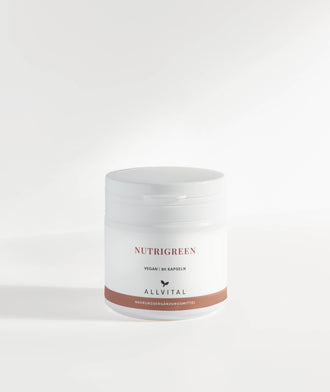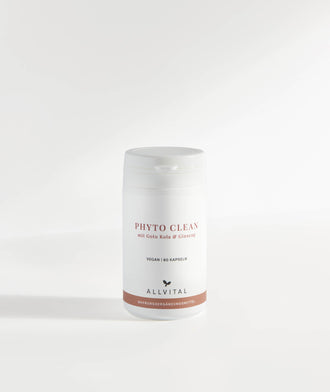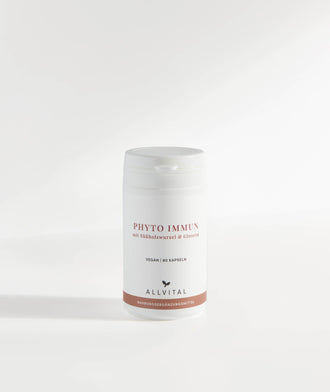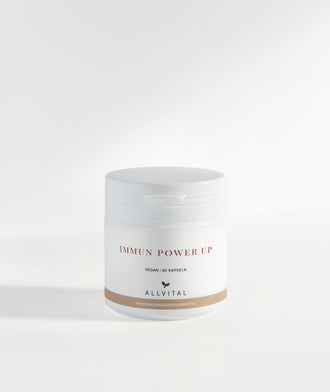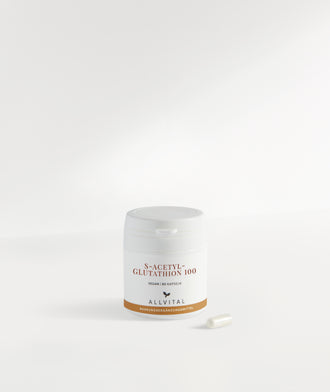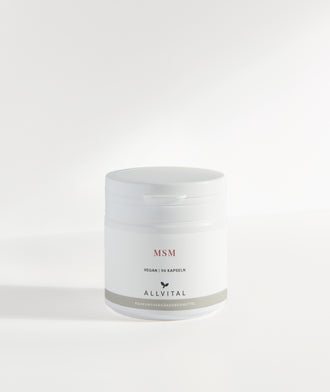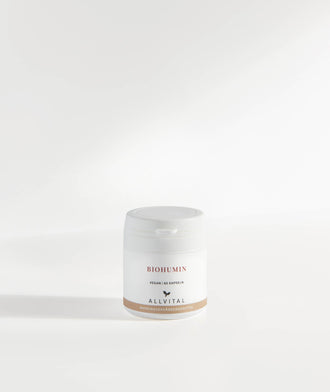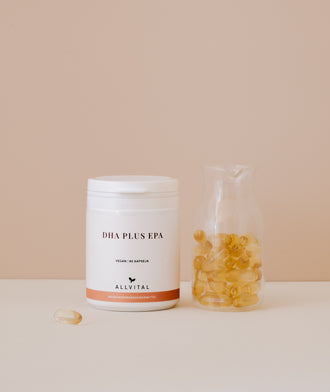
Stimulating the lymphatic system
The lymphatic system plays a central role in our health. If it is not functioning efficiently, this can manifest in symptoms such as swelling, fatigue, blemished skin, and increased susceptibility to infections.
What is the lymphatic system?
The body has three main fluid transport systems: arteries, veins, and lymphatic vessels. While blood vessels primarily transport oxygen and nutrients, the lymphatic system performs other essential tasks: it removes excess interstitial fluid, transports immune cells, and clears metabolic waste and toxins from tissues.
Unlike the circulatory system, which is powered by the heart, the lymphatic system is not a closed loop and has no central pump. Lymph flows in one direction only – from the tissues back into the venous bloodstream.
Structure of the lymphatic system
The lymphatic system consists of a highly branched network of tiny lymphatic capillaries, larger lymphatic vessels, numerous lymph nodes, and lymphatic organs such as the spleen, thymus, and tonsils.
Lymphatic vessels begin blindly in the tissue. There, they absorb excess fluid (interstitial fluid) and transport it through increasingly larger vessels to their entry point into the large veins (left and right venous angles) just before the heart.
Lymph is usually clear to slightly yellowish. Only in the area of the intestines, where fat-rich components are absorbed, does it appear milky – this is referred to as chyle.
Along the lymphatic vessels are lymph nodes – filtration stations where immune cells detect and eliminate pathogens or harmful substances.
How lymph transport works
Since the lymphatic system has no central pump, it relies on other mechanisms to stimulate lymph flow:
1. Lymphangions – the “lymph hearts”
The larger lymphatic vessels are divided into segments that can contract independently. These segments are called lymphangions. Controlled by the autonomic nervous system, they create a pumping motion that moves the lymph toward the heart.
At rest, these contractions occur about ten times per minute – during physical activity, the frequency can increase to up to 60 times per minute. One-way valves prevent the lymph from flowing backward.
2. Muscle and joint pump
Movement is one of the most effective ways to promote lymphatic flow. When muscles contract and relax – for example, during walking or climbing stairs – they compress the surrounding lymph vessels and support their transport function.
3. Deep abdominal breathing
Large lymphatic vessels are located in the abdominal area. The movement of the diaphragm during deep abdominal breathing creates a negative pressure that facilitates lymph drainage. This technique is especially helpful in cases of lymph congestion below the navel.
4. Pulse waves
Additionally, pressure waves from nearby arteries can gently stimulate the lymphatic vessels. While this effect is minor, it helps support lymph flow during periods of rest.
Where most lymph nodes are located – and why it matters
A particularly high number of lymph nodes are found in the neck, under the armpits, along the groin, and in the abdominal area. These regions serve as major collection points for lymph from large areas of the body. For therapeutic applications such as manual lymphatic drainage or tapping techniques (e.g. according to Dr. Perry Nickelston), it is helpful to know where these nodes are located – as lymph flow can be specifically stimulated in these areas.
The key functions of the lymphatic system
The lymphatic system does far more than just return interstitial fluid to the bloodstream. It performs several essential roles for health and well-being:
- Immune defense: In the lymph nodes, immune cells are activated and pathogens are identified. The lymphatic vessels themselves also serve as transport routes for immune cells – making the lymphatic system a vital part of immune function.
- Detoxification: Cell debris, metabolic waste, pathogens, and toxins are removed from the tissue via the lymph.
- Fat absorption: Dietary fats are absorbed in the small intestine via lymphatic vessels and then transported into the bloodstream.
- Regulation of fluid balance: The lymphatic system removes excess fluid from the tissues, helping to prevent swelling.
When lymphatic flow is impaired
When people think of poor lymph drainage, they often think of visible swelling in the arms or legs – so-called lymphedema. But the effects of a sluggish lymphatic system go far beyond that.
Common signs include:
- Weak detoxification: Stronger reactions or a lack of results during detox protocols may point to reduced lymphatic activity.
- Blemished skin: If pathogens or toxins are not properly cleared, this can become visible through the skin.
- Increased susceptibility to infections: Inefficient lymph flow impairs immune function.
- Fatigue and exhaustion: Toxins and inflammatory substances remaining in the tissue can put a strain on energy levels.
- Cellulite: Metabolic waste and toxins accumulating in tissue, combined with fluid retention in fat cells, can worsen the appearance of cellulite.
An active lymphatic system is therefore a key foundation for detoxification, immune strength, and a sense of vitality in the body.
How to stimulate your lymphatic system
An active lymphatic system quite literally needs movement. Since the lymph has no central pump, it depends on external stimuli.
As seen in the section on lymph transport:
- Regular movement activates the muscle and joint pump – even short walks or stretching breaks during the day make a difference.
- Deep abdominal breathing stimulates lymph flow in the abdominal region and also activates the parasympathetic nervous system, which promotes many regenerative processes in the body. A breathing exercise takes only a few minutes and can be integrated into everyday life at any time and place.
Other proven methods to support lymphatic flow:
- Manual lymphatic drainage: A specialized massage technique that specifically supports lymph flow.
- Tapping techniques: Activate central lymph node areas, such as under the armpits or in the groin.
- Rebounding or jump rope: The rhythmic up-and-down motion is particularly effective at stimulating lymph return.
- Dry brushing: Stimulates lymph flow while also increasing circulation to the skin.
- Contrast showers: Alternating temperatures stimulate the vessels and improve drainage.
- Cupping: The vacuum effect promotes circulation and stimulates lymphatic movement.
- Sauna: Increases circulation, promotes detoxification through the skin, and supports lymphatic drainage.
Everyday tip: clothing, posture & habits
What is often underestimated: tight clothing – such as bras, stockings, or pants – can restrict lymphatic flow. Poor posture over long periods, such as sitting with bent joints, also has a negative effect. Choosing loose, non-restrictive clothing, maintaining good posture, and taking short movement breaks throughout the day can effectively support the lymphatic system in everyday life.
Nutrition and hydration
Adequate fluid intake is essential for healthy lymphatic flow – ideally pure water or unsweetened herbal teas. A balanced diet rich in fresh vegetables and fruits, healthy proteins and fats, and moderate amounts of complex carbohydrates is also fundamental for a well-functioning lymphatic system.
Supplements to support the lymphatic system
Certain micronutrients and plant-based compounds can help support lymphatic function and promote the body's natural detoxification processes. Below are some selected products from the Allvital range:
- Nutrigreen: A high-quality vegetable powder blend combined with B vitamins, quercetin, and coenzyme Q10. Supports connective tissue, cellular energy production, and provides a full-body micronutrient boost.
- Phyto Clean: A plant-based complex that promotes the elimination of metabolic waste and supports immune function.
- Phyto Immune: A blend of adaptogenic plants that help stabilize and strengthen the immune system.
- Immune Power Up: Carefully selected micronutrients to support the body’s immune defense. Ideal in combination with Phyto Immun.
- S-Acetyl-Glutathione 100: A highly bioavailable form of glutathione, a cellular antioxidant that supports detoxification at the cellular level.
- MSM (methylsulfonylmethane): An organic sulfur compound that supports the body’s own glutathione production, aids detoxification, and strengthens connective tissue.
- BioHumin: Contains humic and fulvic acids, which can help bind and eliminate toxins.
- DHA plus EPA: Plant-based omega-3 fatty acids that support cellular health.
These products can be used in a targeted way to relieve the lymphatic system, strengthen immune defenses, and promote the natural elimination of waste and toxins. Selection and dosage should always be tailored to individual needs – ideally in consultation with a qualified health professional.
Conclusion – supporting the lymphatic system can be simple
The lymphatic system can be effectively stimulated with simple, everyday strategies. Especially in cases of chronic health issues, promoting lymphatic flow and supporting the body's detoxification processes should always be part of a foundational therapeutic approach.


